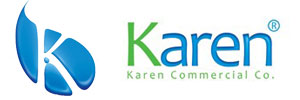The Secretary of the Food and Drug Administration’s Central Information Center for Drugs and Toxins, noting that nearly 90% of poisonings occur in homes, stressed the need to make homes safe from the causes of poisoning.
According to ISNA, Yasna told Manesh: “According to the old tradition, cleaning and washing houses is done in the last days of the year, which should be noted that improper use without knowledge of detergents and chemical cleaners can create irreparable risks.”
“When using chemicals and detergents, always read the label on the package and then consume it,” he said, referring to the safety tips for using detergents. Using chemicals in the dark can be dangerous.
The secretary of the Central Food and Drug Administration’s Food and Toxicity Information Office warned of a combination of chemicals such as salt ink, bleach and bleach, saying the resulting steam and gases from the mixture were very toxic and suffocating.
He added: “It has been seen that some people who are unaware of this danger think that mixing bleach and cosmetics increases the cleansing effect of these compounds.” Meanwhile, the dangerous gas from the mixing has led to severe inhalation poisoning and even irreversible damage to the lungs. Therefore, we reiterate that in no way should the types of compounds, powders, and detergents, bleaches, and bleaches be mixed together.
The secretary of the Food and Drug Administration’s Central Drug and Toxicity Information Center added: “Also, many household products such as salt ink, detergents and polishes, pipe openers, lacquer cleaners, insecticide and chewing gum toxins (such as mouse death), thinner, antifreeze, gasoline and Oil can be very toxic if swallowed and in contact with the skin and eyes, or if inhaled.
According to the Food and Drug Administration’s public relations department, he noted that when using chemicals and detergents, open windows so that the air flows well into the environment. Many of these compounds produce toxic fumes that damage the mucous membranes of the mouth, nose and lungs.
In the end, he said: Some of the recommendations for using detergents are as follows:
1. When cleaning surfaces and using detergent and cleansing compounds from rubber gloves, shoes and, if possible, always use the mask immediately after using chemicals, close the lid and make sure that no closed container is safe from children’s access.
2. Contact the 115 Emergency Center or the 190 Drug and Toxin Information Center if your loved ones have swallowed or inhaled non-food and toxic substances.
3. Always keep chemicals and detergents, oil and gasoline and medicines in the original container. Never store these products in food containers (such as soda bottles). Children may mistakenly eat these substances and become severely poisoned.
4. In case of accidental skin or eye contact with chemicals and detergents, rinse the area with plenty of water as soon as possible, and if the local irritation does not go away or the symptoms of burns, swelling, burning and itching appear, go to the medical center as soon as possible.


